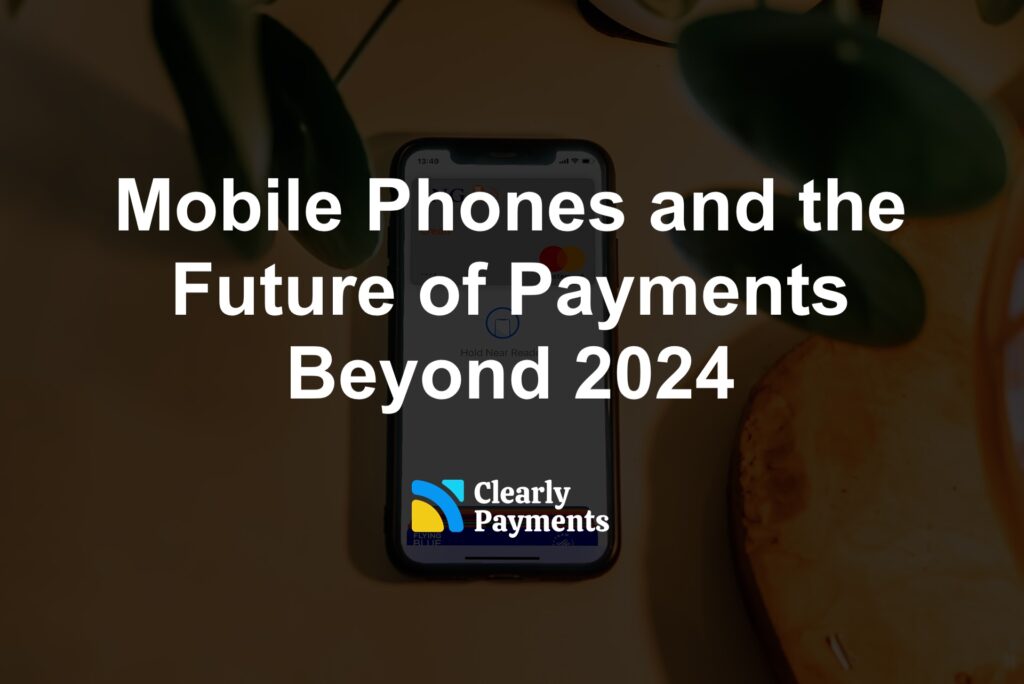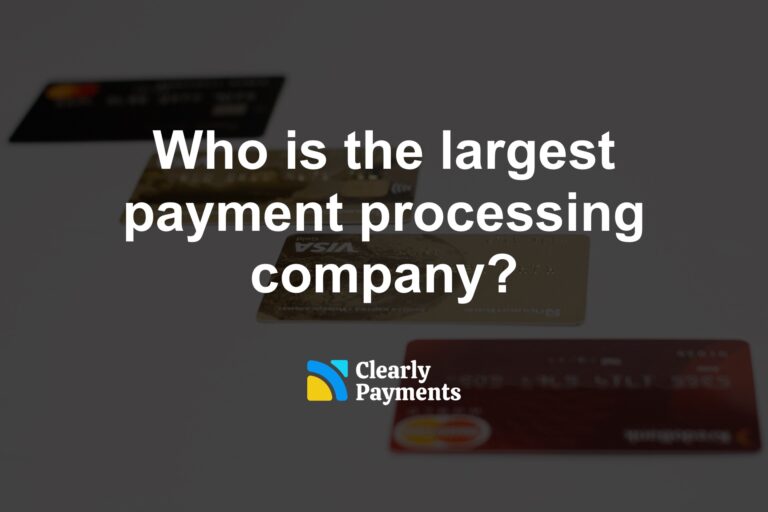In the landscape of commerce, mobile payments have emerged as a disruptive force, altering the way people engage in financial transactions. Gone are the days of clunky cash registers and cumbersome wallets. Instead, the sleek convenience of tapping smartphones or swiping wearables has become the new norm.
This transformation signifies more than just a change in transaction methods. It represents a paradigm shift in how consumers and businesses interact financially. As technology advances and consumer preferences evolve, the trajectory of mobile payments promises unparalleled convenience, robust security, and seamless integration into our daily lives.
The Growth of Mobile Payments
The ascent of mobile payments has been nothing short of meteoric. The global mobile payment market surged to $54 billion in 2023 and is forecasted to skyrocket to $608 billion by 2030, boasting a compounded annual growth rate (CAGR) of 35.5%.
This exponential surge owes itself to advancements in smartphone technology and a significant shift in consumer behavior. The widespread adoption of powerful smartphones equipped with Near Field Communication (NFC) capabilities has paved the way for a mobile-first payment experience. Consumers, increasingly tech-savvy and seeking convenience, have readily embraced the swift and seamless nature of mobile payments over traditional methods.
51% of smartphone users in the USA have engaged in contactless payments at least once in 2023.
This shift is demonstrated by the estimate that 51% of U.S. smartphone users had engaged in contactless payments at least once in 2023. This trend extends beyond physical stores, encompassing peer-to-peer transfers and online purchases on e-commerce platforms.
The Technology Behind Mobile Payments
Mobile payments rely on a sophisticated blend of technologies to facilitate seamless, secure, and convenient transactions. At the heart of mobile payment systems are Near Field Communication (NFC), Quick Response (QR) codes, and secure elements such as encryption and tokenization.
Near Field Communication (NFC) is a key technology enabling contactless payments. It allows two devices, like a smartphone and a payment terminal, to communicate when they are close to each other, typically within a few centimeters. When a user holds their NFC-enabled smartphone near a payment terminal, the NFC chip in the phone communicates with the terminal to complete the transaction. This technology is the backbone of popular payment services like Apple Pay, Google Pay, and Samsung Pay.
QR codes offer another method for mobile payments. A user can scan a QR code displayed by the merchant using their smartphone’s camera, which then prompts the payment app to initiate the transaction. This method is particularly popular in regions with a high penetration of smartphones but lower NFC infrastructure, such as in many Asian countries.
Security is a critical component of mobile payment technology. Encryption ensures that data transmitted during a transaction is scrambled and unreadable to unauthorized parties. Tokenization adds another layer of security by replacing sensitive information, such as credit card numbers, with a unique token that is useless if intercepted. This means that even if a transaction is compromised, the actual card details remain secure.
Biometric authentication, such as fingerprint or facial recognition, is increasingly used to verify the identity of the user, adding a personal layer of security to the transaction process. This technology ensures that only the authorized user can make a payment from their device, reducing the risk of fraud.
Digital Wallets and Mobile Payments
Digital wallets and mobile payments are transforming the financial landscape, offering a convenient and efficient way to conduct transactions. The mobile payment market is on a trajectory of rapid growth, with projections indicating it will reach a staggering $587.52 billion by 2030, growing at a compound annual growth rate (CAGR) of 36.2%. This growth is fueled by the increasing adoption of digital wallets like Apple Pay, Google Pay, and Samsung Pay, which are becoming integral to e-commerce and in-store purchases.
In 2021, digital wallets accounted for approximately half of all global e-commerce transactions, a trend that is expected to continue in the years to come. The convenience and security offered by these payment methods are driving their popularity among consumers and merchants alike. China is leading the charge in mobile wallet usage, with nearly half of all digital wallets in the world being used by its citizens. This widespread adoption is indicative of a broader global shift towards cashless and contactless payment methods.
In the United States, the adoption of contactless payments is also on the rise, with over 40% of smartphone users having used this method at least once in 2023. Apple Pay is particularly dominant in the US market, with its user base expected to surpass 55 million in 2023. This growing reliance on digital wallets and mobile payments underscores the move towards a more technology-driven and efficient financial ecosystem, shaping the future of commerce and banking.
Security and Trust with Mobile Payments
As mobile payments continue to gain popularity, security and trust remain paramount concerns for both consumers and service providers. Despite the advanced security measures implemented in mobile payment systems, there is a significant gap between user perception and reality. For instance, a Pew Research survey found that 38% of US consumers felt mobile payments were “poorly protected,” compared to just 9% for credit cards. This discrepancy highlights the need for continued efforts in building consumer trust and confidence in mobile payment technologies.
Encryption plays a vital role in protecting data during transmission, ensuring that even if intercepted, the information remains unintelligible to unauthorized parties. Tokenization adds an extra layer of security by replacing sensitive data, such as credit card numbers, with unique tokens that are meaningless outside of the specific transaction context. This feature is particularly effective in safeguarding user information; even if a merchant’s system is breached, hackers would not have access to real credit card information.
Biometric authentication, including fingerprint scanning and facial recognition, provides a highly secure and convenient method for user verification, reducing the risk of fraud and identity theft. Despite these technological advancements, maintaining trust in mobile payment systems also depends on user education and awareness. Consumers need to be informed about the security features of their chosen payment platforms and the best practices for protecting their personal information.
Service providers must be transparent about their security protocols and responsive to emerging threats to maintain user confidence. Regulatory compliance is another critical aspect of ensuring security and trust in mobile payments. Adhering to standards set by organizations such as the Payment Card Industry Data Security Standard (PCI DSS), the General Data Protection Regulation (GDPR), and Europay, MasterCard and Visa (EMV) helps to ensure that mobile payment systems meet stringent security and privacy requirements.
A Glimpse into the Future of Mobile Payments
The future of mobile payments is poised for significant transformation, driven by technological advancements and changing consumer behaviors. As we move beyond 2024, several key trends are expected to shape the landscape of mobile payments:
Increased Adoption of Contactless Payments: The convenience and speed of contactless payments, facilitated by NFC technology, are expected to drive their increased adoption worldwide. Consumers are becoming more comfortable with tapping their phones to make payments, and this trend is likely to continue, with more retailers and service providers integrating contactless payment options.
Integration of Biometric Authentication: Security concerns are paramount in the realm of mobile payments. Biometric authentication methods, such as fingerprint recognition, facial recognition, and iris scanning, are becoming more sophisticated and are expected to be integrated into mobile payment systems. This will enhance security and provide a more seamless and personalized payment experience.
Expansion of Blockchain and Cryptocurrencies: Blockchain technology offers a secure and transparent way to conduct transactions. As cryptocurrencies become more mainstream, we can expect to see a rise in mobile payment platforms that support digital currencies, offering users more flexibility and options for making payments.
Growth of Mobile Wallets in Emerging Markets: Mobile wallets are becoming increasingly popular in emerging markets, where traditional banking infrastructure may be lacking. Mobile payments provide an accessible and convenient way for people in these regions to participate in the digital economy, leading to greater financial inclusion.
Enhanced User Experience with AI and Machine Learning: Artificial intelligence (AI) and machine learning will play a crucial role in the future of mobile payments. These technologies can be used to analyze spending patterns, detect fraudulent activities, and offer personalized recommendations, thereby improving the overall user experience.
Cross-Border Mobile Payments: As the global economy becomes more interconnected, there will be a growing need for seamless cross-border payment solutions. This will enable consumers and businesses to make transactions across different currencies and regions with ease.
Regulatory Evolution: As mobile payments continue to evolve, so too will the regulatory landscape. Governments and financial authorities will need to develop new regulations and standards to ensure the security, privacy, and integrity of mobile payment systems.
The future of mobile payments is set to be characterized by increased convenience, security, and innovation. As technology continues to advance, we can expect to see a more integrated, user-friendly, and secure mobile payment ecosystem that caters to the diverse needs of consumers and businesses around the world.




